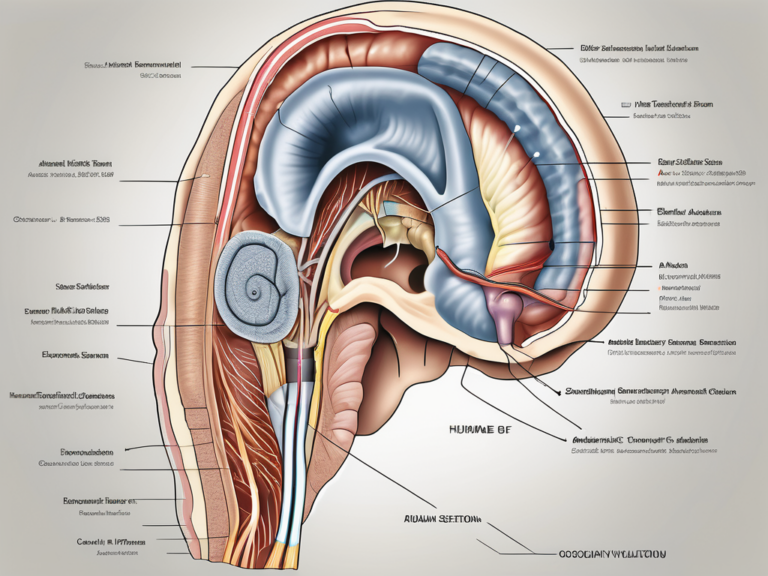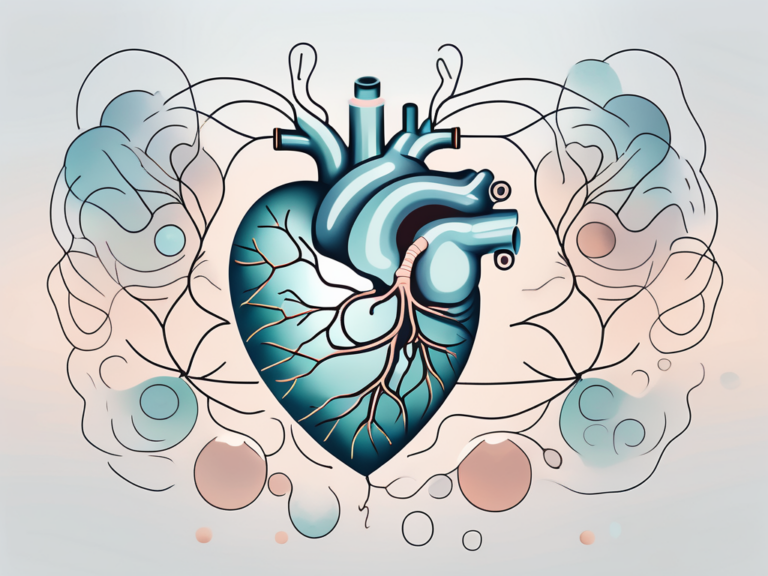vagus nerve stimulation meditation
The vagus nerve is a key player in our body’s autonomic nervous system. This article explores the fascinating connection between the vagus nerve and meditation, specifically focusing on the benefits of vagus nerve stimulation meditation. Understanding the science behind this practice can shed light on its potential implications for our health and well-being.
Understanding the Vagus Nerve
The vagus nerve, also known as the tenth cranial nerve, is the longest cranial nerve in our body. It serves as a vital communication channel between the brain and various organs in the body, including the heart, lungs, and digestive system. This nerve plays a crucial role in regulating our body’s involuntary functions, such as heart rate, breathing, and digestion.

The Role of the Vagus Nerve in the Body
The vagus nerve is responsible for maintaining homeostasis in our body. It helps to balance the sympathetic and parasympathetic nervous systems, which control our fight-or-flight response and our rest-and-digest response, respectively. By regulating these systems, the vagus nerve promotes overall physiological stability and well-being.
The Connection Between the Vagus Nerve and the Brain
While the vagus nerve connects to various organs in our body, it has a particularly strong connection with the brain. This connection enables the vagus nerve to send signals back and forth, allowing the brain to influence bodily functions and vice versa. This bidirectional communication is crucial for maintaining optimal health and vitality.
Furthermore, the vagus nerve is not only involved in regulating basic bodily functions but also plays a role in more complex processes. For example, recent studies have shown that the vagus nerve is involved in the regulation of mood and emotions. It has been found that stimulating the vagus nerve can have a positive impact on mental health, reducing symptoms of depression and anxiety.
In addition to its role in mood regulation, the vagus nerve also plays a part in the body’s immune response. It has been discovered that the vagus nerve can communicate with immune cells, influencing their activity and response to pathogens. This connection between the vagus nerve and the immune system highlights the importance of the nerve in maintaining overall health and well-being.
The Science Behind Vagus Nerve Stimulation
Vagus nerve stimulation (VNS) is a technique that involves the targeted activation of the vagus nerve. This technique aims to improve our overall well-being by enhancing the functioning of our autonomic nervous system. VNS has been shown to have promising effects on various aspects of our health.

The vagus nerve, also known as the “wandering nerve,” is the longest cranial nerve in our body. It originates in the brainstem and branches out to various organs, including the heart, lungs, and digestive system. This nerve plays a crucial role in regulating our body’s internal functions, such as heart rate, digestion, and immune response.
The Process of Vagus Nerve Stimulation
Vagus nerve stimulation can be achieved through various methods, including invasive and non-invasive techniques. Invasive VNS requires the implantation of a device that delivers electrical impulses directly to the vagus nerve. This device, often referred to as a vagus nerve stimulator, is typically placed under the skin in the chest area. It is connected to the vagus nerve through a wire, allowing for precise and controlled stimulation.
Non-invasive VNS, on the other hand, involves external stimulation of the nerve using techniques such as transcutaneous electrical stimulation. This method utilizes small electrodes placed on the skin, typically in the neck area, to deliver electrical impulses to the vagus nerve. While non-invasive VNS does not require surgery, it may not provide the same level of precision and control as invasive VNS.
Potential Health Benefits of Vagus Nerve Stimulation
Research suggests that vagus nerve stimulation can have a profound impact on our health. It has shown promising results in treating conditions such as epilepsy, depression, anxiety, and even chronic pain. By modulating the vagus nerve, this technique may help restore balance in our body and alleviate symptoms associated with various disorders.
Studies have also indicated that VNS may have a positive effect on our cognitive function. By enhancing the communication between the brain and the body, VNS may improve memory, attention, and overall cognitive performance. This potential benefit opens up new possibilities for the treatment of neurodegenerative diseases and cognitive disorders.
Furthermore, VNS has been explored as a potential therapy for inflammatory conditions, such as rheumatoid arthritis and inflammatory bowel disease. The vagus nerve plays a crucial role in regulating our body’s immune response, and by stimulating it, VNS may help reduce inflammation and promote healing.
While vagus nerve stimulation shows great promise, it is important to note that further research is still needed to fully understand its mechanisms and potential applications. However, with its ability to target the autonomic nervous system and influence various bodily functions, VNS holds great potential as a therapeutic tool for improving our overall well-being.
Meditation and the Vagus Nerve
Meditation has long been recognized for its numerous benefits on our mental, emotional, and physical well-being. More recently, scientific studies have started to explore the connection between meditation and the vagus nerve. It appears that meditation can stimulate the vagus nerve and promote its optimal functioning.

The Impact of Meditation on the Vagus Nerve
Regular meditation practice has been shown to increase vagal tone, which refers to the activity and responsiveness of the vagus nerve. Higher vagal tone is associated with improved emotional regulation, reduced stress response, and enhanced overall health. By promoting vagal tone, meditation may have a positive impact on various physiological and psychological processes.
Different Meditation Techniques for Vagus Nerve Stimulation
There are various meditation techniques that can specifically target the vagus nerve and promote its stimulation. Deep belly breathing, also known as diaphragmatic breathing, is one such technique. By focusing on slow and deep breaths that engage the diaphragm, we can activate the vagus nerve, triggering a relaxation response in our body.
Metta meditation, also known as loving-kindness meditation, is another practice that has shown promise in activating the vagus nerve. This meditation involves cultivating feelings of compassion and love towards ourselves and others. Research suggests that metta meditation can increase vagal tone and improve social connectedness.
In addition to deep belly breathing and metta meditation, another technique that can stimulate the vagus nerve is mantra meditation. This practice involves repeating a specific word or phrase, known as a mantra, to focus the mind and induce a state of deep relaxation. As the mind becomes more focused and calm, the vagus nerve is activated, leading to a cascade of physiological and psychological benefits.
Furthermore, mindfulness meditation, which involves non-judgmental awareness of the present moment, has also been found to have a positive impact on the vagus nerve. By cultivating a state of mindfulness, we can enhance the functioning of the vagus nerve, leading to improved emotional well-being and stress reduction.
Combining Vagus Nerve Stimulation and Meditation
By combining vagus nerve stimulation techniques with meditation, we can enhance the benefits of both practices. Incorporating VNS into our meditation practice can deepen our connection with our body and further promote a state of relaxation and well-being.
But what exactly is the vagus nerve? Well, the vagus nerve is the longest cranial nerve in the body, originating in the brain and extending down to the abdomen. It plays a crucial role in regulating various bodily functions, such as heart rate, digestion, and even mood. Stimulating the vagus nerve can have a profound impact on our overall well-being.
How to Incorporate Vagus Nerve Stimulation into Your Meditation Practice
One simple way to incorporate VNS into meditation is to practice deep belly breathing during your meditation sessions. Focus on breathing deeply into your abdomen, allowing your diaphragm to fully engage with each breath. This will activate your vagus nerve and enhance the relaxing effects of your meditation practice.
But did you know that there are other techniques you can consider as well? For example, using a biofeedback device that provides direct vagus nerve stimulation. These devices use gentle electrical impulses to activate the vagus nerve as you meditate, amplifying the benefits of both practices. It’s like giving your vagus nerve a gentle massage, promoting a deeper sense of relaxation and well-being.
Precautions and Considerations for Vagus Nerve Stimulation Meditation
While vagus nerve stimulation meditation holds great potential, it’s important to exercise caution and consider individual circumstances. If you have any existing medical conditions or concerns, it’s advisable to consult with a healthcare professional before incorporating VNS into your meditation practice. They can provide guidance tailored to your specific needs.
Additionally, it’s worth noting that vagus nerve stimulation is not a one-size-fits-all solution. Each individual may respond differently to VNS, and it may take some time to find the right approach that works best for you. Patience and self-awareness are key as you explore the combination of VNS and meditation.
So, whether you choose to focus on deep belly breathing or explore the use of biofeedback devices, incorporating vagus nerve stimulation into your meditation practice can open up a whole new world of relaxation and well-being. Take the time to experiment and discover what works best for you, and enjoy the profound benefits that this powerful combination can bring.
The Future of Vagus Nerve Stimulation Meditation
Vagus nerve stimulation meditation is an exciting field of research that shows promise for the future of health and wellness. Ongoing studies and developments aim to further uncover the potential benefits of this practice and refine the techniques involved.
Ongoing Research and Developments
Researchers are actively investigating the effects of vagus nerve stimulation meditation on various health conditions, including depression, anxiety, inflammation, and neurodegenerative disorders. These studies aim to provide further insights into the mechanisms behind this practice and its potential applications.
One area of ongoing research focuses on the impact of vagus nerve stimulation meditation on mental health. Preliminary studies have shown promising results, suggesting that this practice may help alleviate symptoms of depression and anxiety. By stimulating the vagus nerve, meditation may activate the body’s relaxation response, leading to a reduction in stress and an improvement in overall well-being.
Another exciting avenue of exploration is the potential use of vagus nerve stimulation meditation in the management of chronic pain. Chronic pain affects millions of people worldwide and can have a significant impact on their quality of life. By targeting the vagus nerve through meditation, researchers hope to develop non-invasive and drug-free approaches to pain management. Early studies have shown promising results, with some individuals reporting a decrease in pain intensity and an improvement in their ability to cope with discomfort.
Potential Implications for Health and Wellness
As the understanding of the vagus nerve and meditation deepens, the potential implications for our health and wellness become increasingly promising. Continued research and advancements in this field may pave the way for new therapeutic approaches that harness the power of the vagus nerve and meditation to improve our overall well-being.
One potential implication is the integration of vagus nerve stimulation meditation into existing healthcare practices. As more evidence emerges supporting its efficacy, healthcare providers may incorporate this practice into their treatment plans, offering patients a complementary approach to conventional therapies. This integration could lead to a more holistic and personalized approach to healthcare, addressing both the physical and mental aspects of well-being.
Furthermore, the potential implications of vagus nerve stimulation meditation extend beyond individual health and wellness. As more people engage in this practice, there may be a ripple effect on society as a whole. By promoting relaxation, stress reduction, and emotional well-being, vagus nerve stimulation meditation could contribute to a more peaceful and harmonious world. Imagine a society where individuals are more connected to themselves and others, where empathy and compassion are nurtured, and where mental health is prioritized.
In conclusion, vagus nerve stimulation meditation offers a fusion of ancient wisdom and modern science. By tapping into the power of the vagus nerve through meditation, we have the potential to enhance our physical and mental health, promote relaxation, and restore balance in our lives. As research and understanding continue to grow, the future of vagus nerve stimulation meditation holds great promise in shaping our approach to health and wellness.






